5 Clever Uses For Coffee Grounds In The Garden
Ever wondered what to do with all those leftover coffee grounds after you’ve brewed your morning cup o’ joe?
Sure, you’ve heard that some plants love them – but not all do.
Well, it turns out you can give ’em a second life in your garden beyond just those plants that love them!
Yup, you heard it right – coffee grounds can be a total game-changer for your plants and soil.
Not only are you recycling and reducin’ waste, but you’re also helpin’ out your garden in a bunch of clever ways.
From fertilizin’ your plants to keepin’ pests at bay, coffee grounds can do it all.
So, stick around as we spill the beans on the top 5 clever uses for coffee grounds in your garden!
Coffee Grounds As Fertilizer
Here’s something you might not have considered before – using coffee grounds as a fertilizer for your plants.
Yeah it may sound a bit out there, but trust me, your plants are gonna love it.
So let’s chat about why coffee grounds can be a pretty cool addition to your garden.
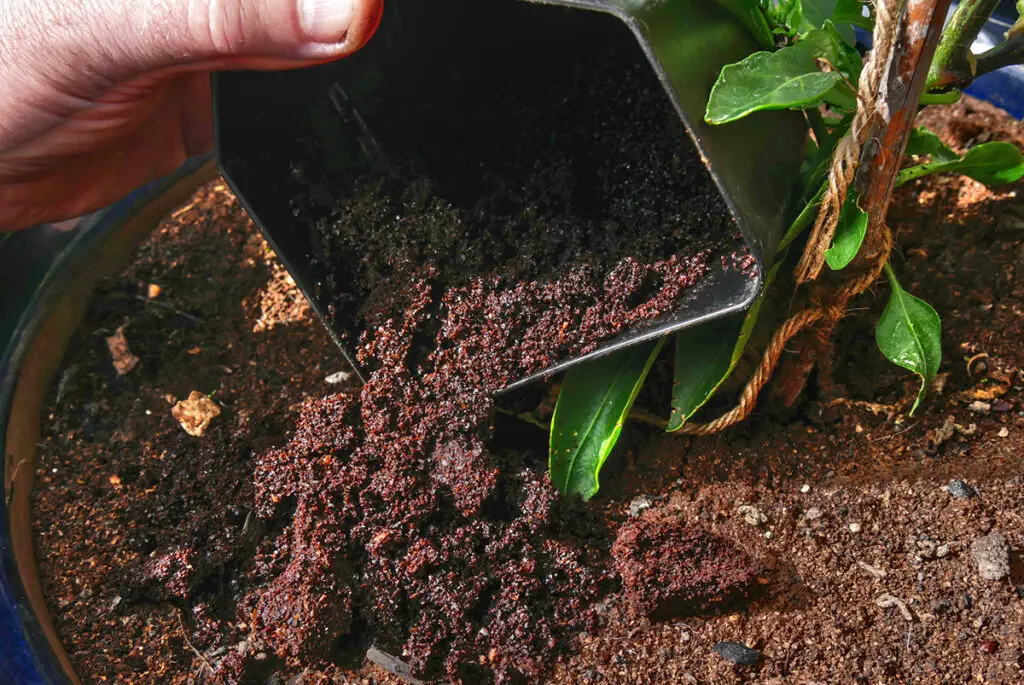
You see, these little brown bits are packed with some awesome nutrients, like nitrogen, potassium, and phosphorus.
Sounds fancy, right?
Well, these nutrients are basically like plant superfood, giving your plants the energy and strength they need to grow big and strong.
Now, you might be wondering how the heck you’re supposed to use coffee grounds in your garden.
The cool thing about coffee grounds is that they can act as a slow-release fertilizer, which means they’ll gradually break down and release those sweet, sweet nutrients into the soil over time.
To do this, all you need to do is sprinkle your used coffee grounds around the base of your plants, or mix them into the soil a bit.
Be sure not to go overboard, though – a little goes a long way! We don’t want to smother our plants in caffeine, now do we?
And hey, if you’re not a coffee drinker, no worries!
Just hit up your local coffee shop and ask if they have any used grounds they’d be willing to part with.
Most places are more than happy to share the wealth, and you’ll be giving those grounds a second life – talk about a win-win!
So, is this coffee ground fertilizer idea starting to grow on you yet (pun intended)?
It’s a pretty rad way to recycle your coffee grounds, give your plants a nutrient boost, and keep your garden looking fresh and healthy.
Plus, it’s basically free, which is always a bonus in my book!
Coffee Grounds For Composting
Coffee grounds can be a fantastic addition to your compost, acting as a “green” material that helps balance out the “browns” and gets your compost cookin’.
So what do we mean by “green” material?
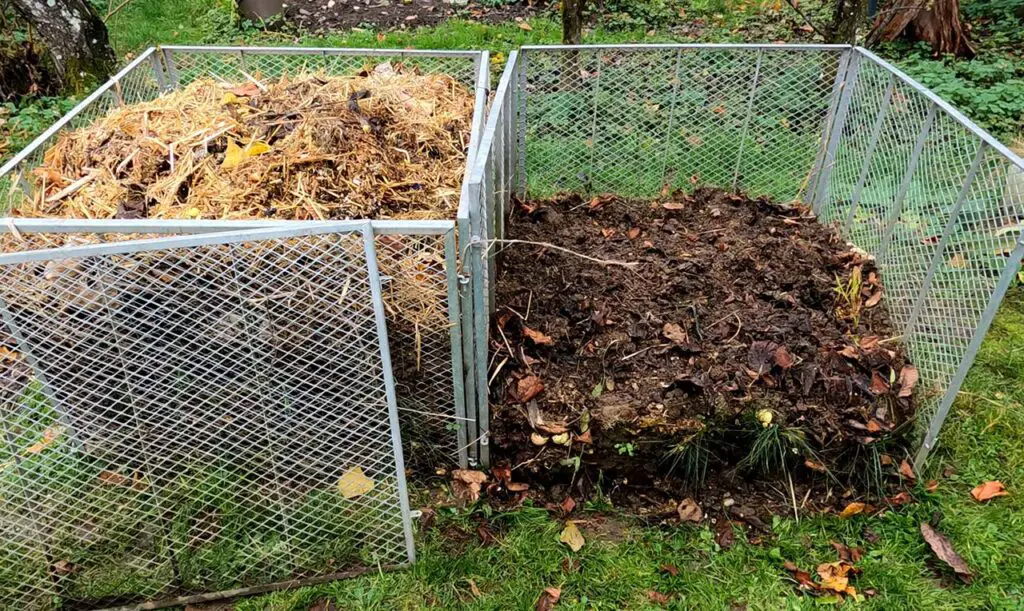
In the composting world, “greens” are nitrogen-rich materials that help to balance out the carbon-rich “browns” (like leaves, straw, and cardboard).
Coffee grounds are considered green because they’re packed with nitrogen, which is essential for all that good bacteria to munch on and break down the organic matter in your compost.
Plus, they smell way better than other greens like grass clippings or kitchen scraps (just sayin’).
Now that we’ve got that out of the way, here are some tips for adding coffee grounds to your compost pile like a pro:
- Mix it up: As with any other green material, moderation is key. You don’t want to dump a massive pile of coffee grounds in the middle of your compost heap and call it a day. Instead, sprinkle them evenly throughout the pile, mixing them in with the brown materials. This will help to distribute the nitrogen and keep everything balanced.
- Don’t go overboard: While coffee grounds are an excellent addition to your compost, you don’t want them to make up more than about 20% of your total compost materials. Too much nitrogen can lead to a stinky, slimy compost mess, which nobody wants. So, keep an eye on the ratio of greens to browns and adjust as needed.
- Watch the acidity: One thing to keep in mind is that used coffee grounds can be slightly acidic, which can affect the pH balance of your compost. Most of the time, this isn’t a big deal, especially if you’re mixing in plenty of brown materials. But if you’re adding a ton of coffee grounds or have a smaller compost pile, you might want to occasionally check the pH to make sure everything’s all good.
- Source your grounds: If you’re not a coffee drinker, don’t worry – there are still plenty of ways to score coffee grounds for your compost. Many coffee shops will give away used grounds for free, so just ask your local barista! You can also ask friends, family, or coworkers to save their used grounds for you. Boom – free compost material!
- Don’t forget the filters: If you’re using paper coffee filters, go ahead and toss them in the compost too! They’re considered a brown material and will break down just like the coffee grounds themselves. Just make sure they’re not made of synthetic materials or have any plastic coatings.
Coffee grounds are a fantastic, easy-to-find green material that can give your compost a serious boost.
Just remember to mix ’em in, watch the ratios, and keep an eye on the pH, and you’ll be golden.
Coffee Grounds As A Pest Deterrent
These magical little leftovers can actually help you keep those pesky pests like slugs, snails, and ants at bay.
And the best part? It’s super easy to do.
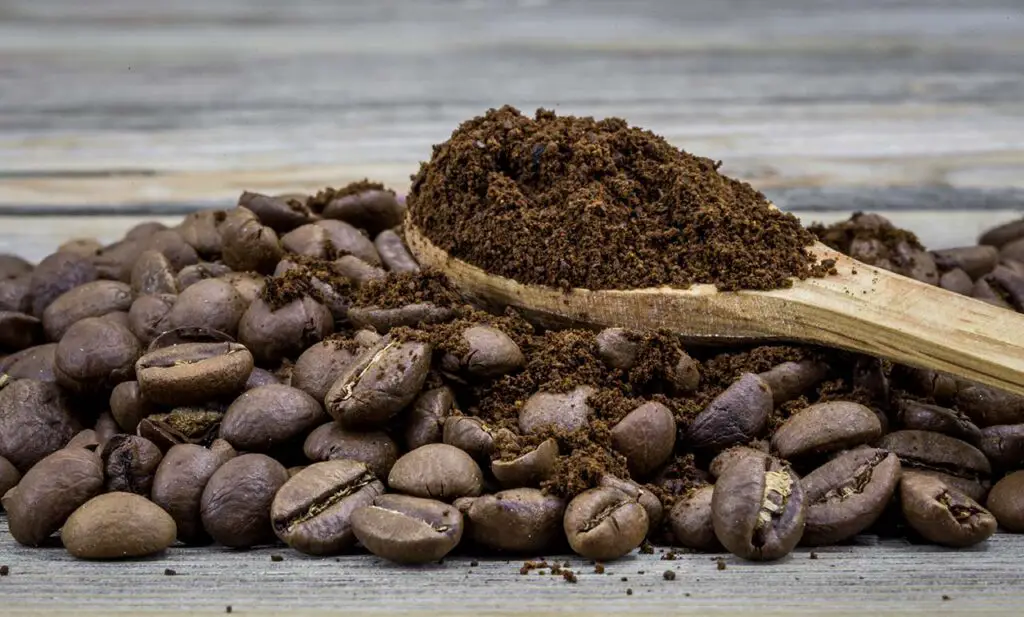
You might be thinking why do coffee grounds even work as a deterrent?
Well, for starters, the caffeine in the coffee grounds can be toxic to many pests, including slugs and snails.
Plus, the coarse texture of the grounds can irritate their slimy little bodies, making them less likely to wanna hang around your plants.
And, as an added bonus, coffee grounds can also help to repel ants by messing with their scent trails. Pretty cool, right?
Now that we know why coffee grounds work, let’s talk about how to properly use them in your garden.
You don’t wanna go dumpin’ a whole pot of coffee on your plants, after all.
That would be a straight-up disaster, my friend!
First, you’ll need some used coffee grounds.
You can either save your own or hit up your local coffee shop and ask ’em if they got any to spare.
Most places are more than happy to hook you up.
Now, when it comes to application, there are a couple of ways you can go about it.
If you’re dealing with slugs or snails, simply sprinkle a thin layer of coffee grounds around the base of your plants.
Make sure you don’t pile it on too thick, though, as it can actually suffocate your plants if you’re not careful.
Aim for about a half-inch layer or so, and you should be good to go.
For ants, you’ll need to find their entry points and trails.
Once you’ve located the little buggers, sprinkle some coffee grounds around the area and along the trail.
This will help to disrupt their scent and keep your garden ant-free!
One thing to keep in mind, though, is that coffee grounds can increase the acidity of your soil.
So, if you’re using them as a pest deterrent, be sure to also keep an eye on your soil’s pH levels.
You don’t wanna accidentally harm your plants in the process, right?
I think coffee grounds can be a total game-changer when it comes to keeping those pesky pests out of your garden.
Just remember to apply them properly and keep an eye on your soil’s pH, and you’ll be well on your way to a happy, pest-free garden.
Coffee Grounds For Mulching And Soil Improvement
Turns out coffee grounds are actually a fantastic mulch and soil amendment for your garden.
Who knew, right?
So, what’s the deal with using coffee grounds in your garden?
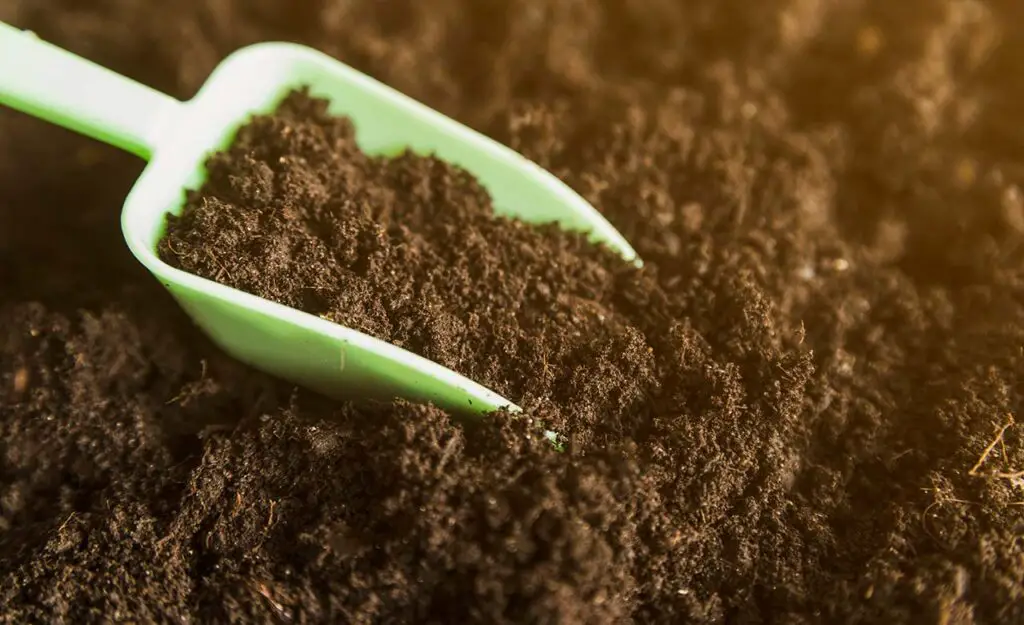
Well, for starters, they’re packed with nutrients – like nitrogen, potassium, and phosphorus – that are super beneficial for your plants.
Plus, they’re slightly acidic, which can help balance the pH levels in your soil.
And if that ain’t enough, coffee grounds also improve soil structure, making it more fertile and easier for plants to grow.
It’s like giving your garden a jolt of java!
Now, I know what you’re thinking: “Sounds great, but how do I actually use these coffee grounds in my garden?”
Don’t worry, I gotchu.
For mulching, just spread the used coffee grounds around the base of your plants, about half an inch thick.
This will help retain moisture, regulate soil temperature, and keep those pesky weeds at bay.
Just be sure not to pile it on too thick, ’cause it can form a crust and prevent water from getting through.
We don’t want that, do we?
As for improving soil structure, you can mix the coffee grounds directly into the soil.
This will not only add those much-needed nutrients but also improve water retention and aeration.
Just remember to keep things balanced – you don’t wanna go overboard with the coffee grounds.
A good rule of thumb is to mix in no more than 10-20% coffee grounds by volume.
That should do the trick!
But, hold up! Before you go sprinkling coffee grounds all willy-nilly in your garden, there are a few things to keep in mind.
First, make sure the grounds are cool before using them (nobody wants a scorched garden, amirite?).
Second, if you’ve got pets, be careful with where you put the coffee grounds.
They can be harmful to dogs and cats if ingested, so keep an eye on your fur babies.
Coffee Grounds As A Natural Fungicide
Coffee grounds can be a super effective, all-natural fungicide, and they’re super easy to use too!
No need to stress about chemicals and all that jazz when you’ve got this sweet lil’ trick up your sleeve.
You might be wondering why coffee grounds are such a big deal when it comes to fighting fungal diseases.
It’s all about the compounds found in coffee, my friend.
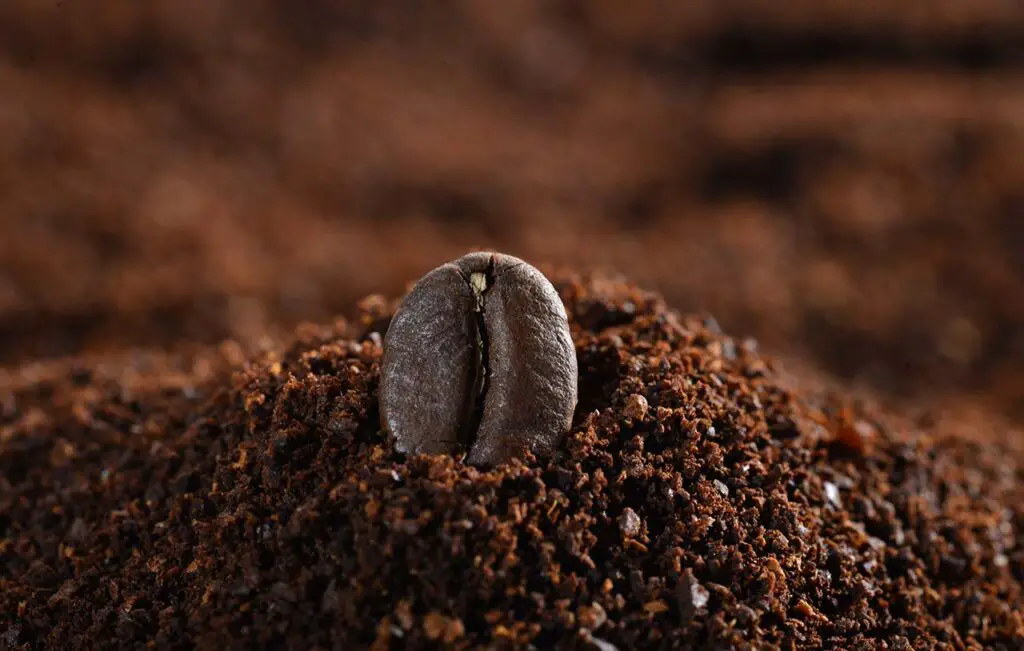
These bad boys contain natural antifungal properties, which can help keep those pesky fungi at bay.
Your plants are gonna love it, and you’re gonna love the results!
I’ve got all the deets on how to actually use coffee grounds in your garden to prevent fungal disease.
First up, you’re gonna wanna make sure you’re using used coffee grounds.
Yup, that’s right – you get to enjoy your morning cup o’ joe AND help your garden thrive.
Talk about multitasking!
Just make sure to let the coffee grounds cool down before using them, so you don’t accidentally burn your plants.
Next, it’s time to mix the coffee grounds with some soil or compost.
This is gonna help balance out the acidity levels and make sure your plants are getting all the nutrients they need.
A good rule of thumb is to mix about a quarter to half a cup of coffee grounds with a gallon of soil or compost.
Now you’re ready to spread the coffee ground mixture around your plants.
Be sure to focus on the base of the plant, as this is where fungi are most likely to strike.
The coffee grounds will create a protective barrier, making it harder for fungi to take hold and wreak havoc in your garden.
One thing to keep in mind is that coffee grounds can be pretty potent, so you don’t wanna go overboard.
Too much of a good thing can actually have negative effects, like stunting plant growth or making your soil too acidic.
Just stick to the recommended amounts, and you’ll be golden!
Finally, don’t forget to water your plants after applying the coffee grounds.
This will help the nutrients in the grounds seep into the soil, giving your plants an extra boost of goodness.
Final Word
And that’s the lowdown on those 5 clever ways to use coffee grounds in your garden.
Remember, not only are you givin’ your plants a nutrient boost, but you’re also keepin’ pests away, improvin’ your soil, and even helpin’ fight off fungal diseases.
Talk about a jack-of-all-trades, right?
Now it’s time put those spent coffee grounds to work. Don’t be afraid to experiment and find the perfect way to use ’em in your garden.
Your plants will thank you, and you’ll be doin’ your part to reduce waste. So go on, give your garden a java jolt, and watch it thrive.